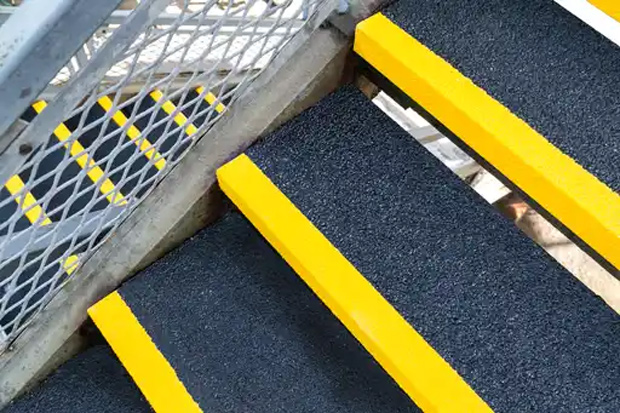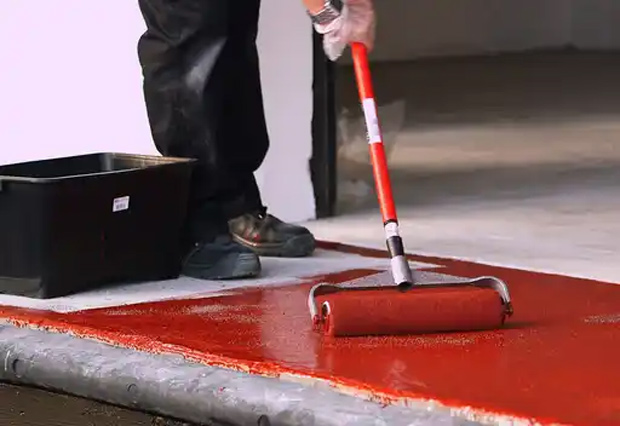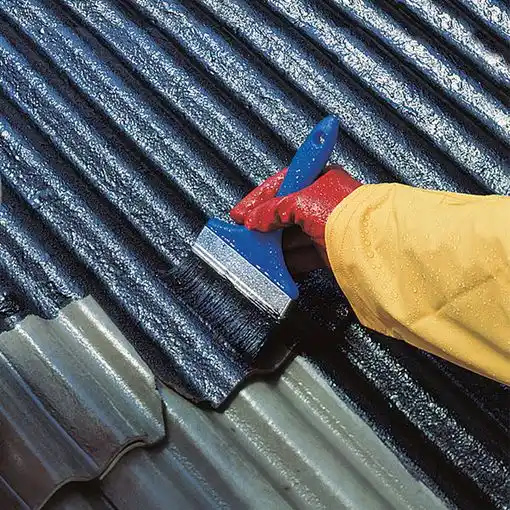In this article, Scott Saunders, Technical Service Manager at Watco, explains why step safety must be a top priority for FMs when preparing for winter, and practical steps to reduce the risk of slips, trips and falls.
As days shorten and the weather turns wetter, the risk of slips, trips and falls on steps increases significantly. Step safety isn’t just about responding to visible wet surfaces. The real risk comes from a combination of seasonal factors including leaking roofs, fallen leaves, worn edges, poor visibility and water ingress.
With careful preparation, facilities managers (FMs) can reduce the risk of slips, trips and falls, in areas that are often overlooked.
Improving visibility
Reduced daylight, heavy rain and damp conditions can quickly turn steps into a high-risk area for hazards. In darker months, steps become difficult to see, particularly in early mornings and late afternoons. Surfaces that are wet or covered with fallen leaves can appear uneven, reflective or discoloured, masking the edge of each step and increasing the chance of losing footing. Puddles of water and wet fallen leaves also reduce friction underfoot, making the surface more slippery.
The step edge should be easy to identify even in poor lighting or when partially covered by leaves. FMs can add high-visibility step edge covers, such as Watco’s Firm-Step® Heavy Duty GRP Step Covers which highlights step edges in a bright colour and provides excellent grip underfoot. In particularly busy areas, combining visible step edges with improved lighting, such as motion-activated LED fittings or floodlights near external stairways, can further help prevent accidents.
Where floors are regularly exposed to water, such as the external walkway leading from the entrance to external steps, anti slip coatings such as Watco’s Safety Grip can provide additional protection too. A single coat provides outstanding slip resistance, even when surfaces become wet.
Strengthening step surfaces
The physical condition of each step plays a major role in maintaining safe surfaces. Over time, weather conditions can weaken or erode surfaces. Frost and ice can widen small cracks, rain can penetrate materials through gaps, and debris or fallen leaves can trap moisture against the surface. In addition, leaks from roofs or gutters often go unnoticed until winter rainfall increases, allowing water to run onto steps and cause damage to coatings or surfaces.
As materials deteriorate, step edges may start to crumble, creating uneven areas or loose fragments that pose both trip and slip risks. When water freezes in these gaps, it expands, breaking down the surface even further.
To prevent this cycle of damage, FMs should carry out regular inspections before and during the winter months. Any cracks, worn edges or rough patches should be repaired as soon as possible to prevent further deterioration. Watco’s Concrex® Carbon Fibre – Epoxy Repair Mortar is easy to apply, exceptionally strong and can be ‘feathered’ to nothing at the edge of the repair to ensure an even step.
Paying attention to indoor steps
While external steps are the most obvious hazard in wet weather, indoor steps can be just as dangerous in the winter. Water is easily tracked inside on shoes or clothing, and any leaks from roofs or ceilings can create puddles in unexpected places. When this water collects on smooth interior steps, it significantly increases the chance of slips.
To address these issues, FMs should apply Watco’s Firm-Step GRP Edges which are extremely durable, highlight the edge of the steps for better visibility, and provide excellent slip resistance. In addition, regular inspections should include checking for signs of water ingress from above. Clearing gutters, ensuring adequate drainage and completing roof repairs will help to stop water from dripping onto facility surfaces. Watco’s Roofite is designed for quick, easy and long-lasting roof repairs – and will not become brittle in the winter.
It’s also important to establish clear procedures for maintaining safe indoor conditions. Teams should have easy access to wet floor signs and know when and where to use them.
Preparation is key
The key to reducing step-related accidents this winter is to plan ahead. Early inspections and preventative action will always be more effective than emergency repairs once a problem has occurred. Highlight step edges to improve visibility, reinforce worn surfaces, and apply slip-resistant coatings before the temperature drops further.
Step safety should form part of every facility’s seasonal maintenance checklist. By addressing these potential hazards early, FMs can protect their teams and visitors, reduce the likelihood of downtime, and ensure a well-maintained facility.
For more practical advice on step safety this winter, download Watco’s free guide here or speak to a Watco expert.








